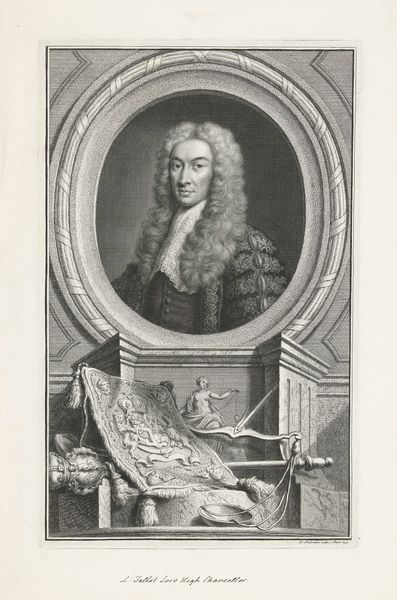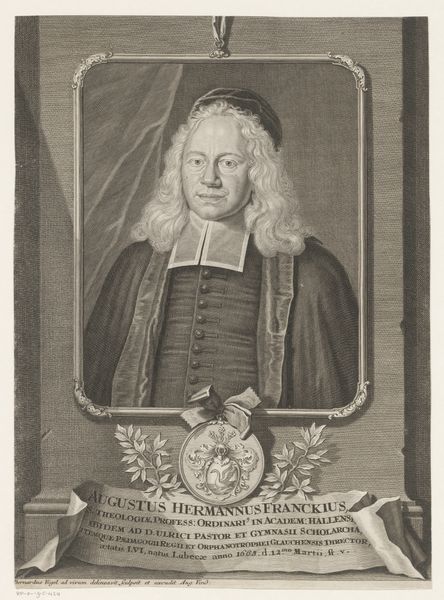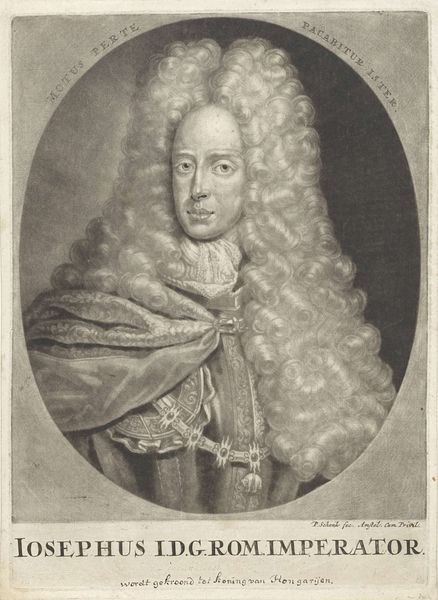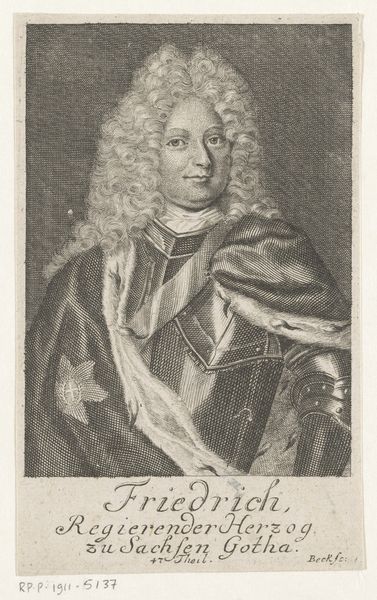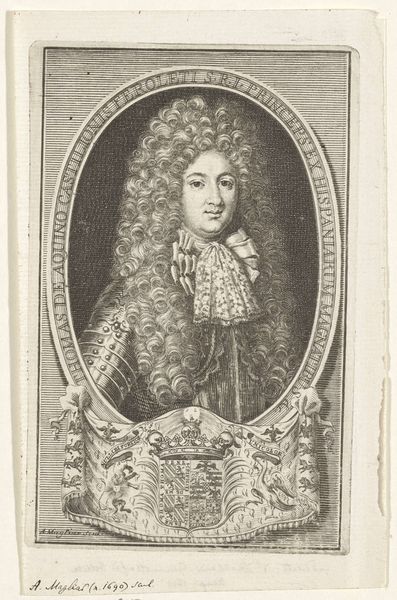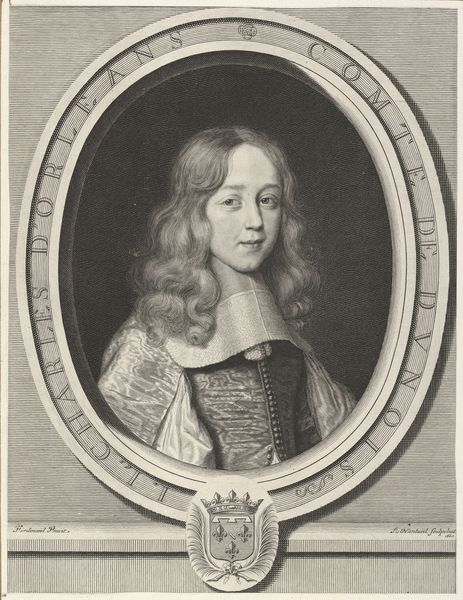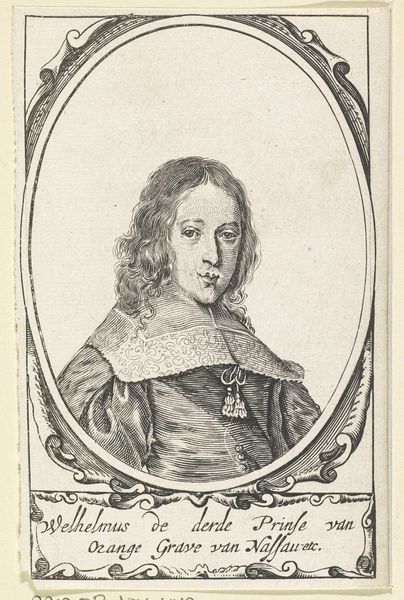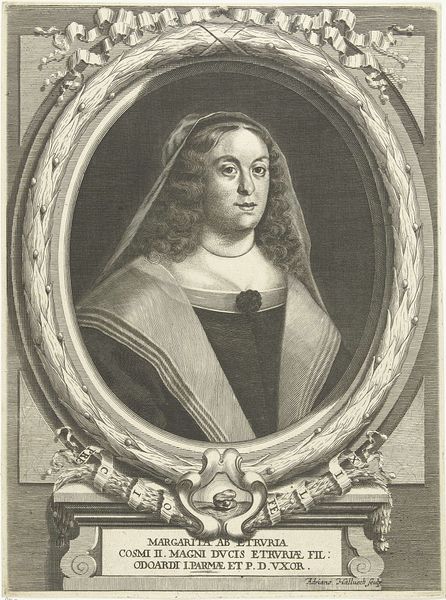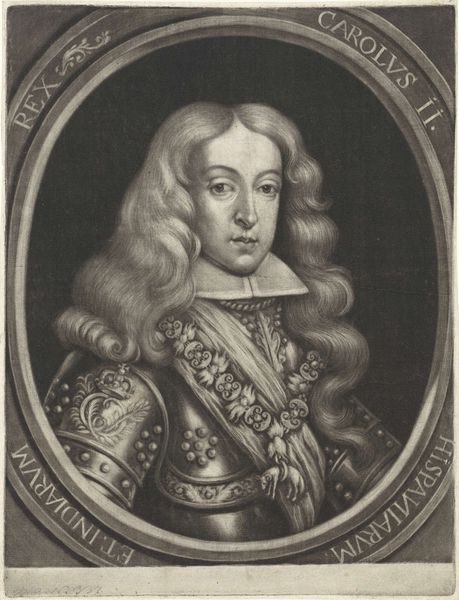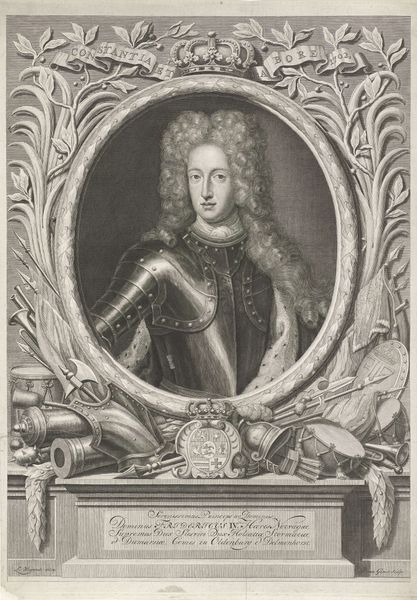
print, engraving
#
portrait
#
baroque
#
dutch-golden-age
# print
#
old engraving style
#
history-painting
#
engraving
Dimensions: height 326 mm, width 222 mm
Copyright: Rijks Museum: Open Domain
Curator: Let's turn our attention to a work from the Dutch Golden Age. This is "Portret van Wilhelmina van Bronckhorst," created sometime between 1630 and 1676 by Theodor Matham. It's an engraving, a print, held in the collection of the Rijksmuseum. Editor: The ornate frame and her reserved expression lend a distinctly formal and serious air, a feeling of restrained power comes from this print. The light is handled masterfully, the details are incredibly crisp, even in monochrome. Curator: Wilhelmina was clearly a woman of standing; her identity communicated not only by her clothing and jewels but in the context of what the image represents. Consider the socio-political roles women played in the Dutch Golden Age. The portrait serves as a marker of family lineage, and likely communicated and solidified power, privilege and social status within her community. It is the visual assertion of an aristocratic woman. Editor: It is certainly about status. Her pose is deliberate, carefully arranged; note the placement of her hand. But looking at the formal elements, consider how the artist uses line. The lines in the background drapes flow very neatly, creating strong dark shadows. This adds depth, pushing Wilhelmina forward. I'm fascinated by the semiotics of the ornamentation, what is being coded there. Curator: Absolutely, and those elements aren't accidental. There’s the matter of lineage, the frame, and even the folds of fabric each contributing to her perceived respectability. Matham consciously emphasizes those characteristics that legitimized her place in society at a time of dynamic sociopolitical evolution and reform. The details and construction underscore not only an individual portrait but a powerful female within a larger narrative about gender roles and class during that period. Editor: Her expression seems a bit at odds, perhaps slightly sad? A very nice study of Baroque aesthetic, but more subtle than a work from say, Italy. A really fine image. Curator: Exactly. A rich reminder that portraits offer not just individual likeness but intricate glimpses into social power dynamics. Editor: A striking convergence of formal artistry and cultural identity. It leaves me with more questions about her inner state as much as society.
Comments
No comments
Be the first to comment and join the conversation on the ultimate creative platform.


